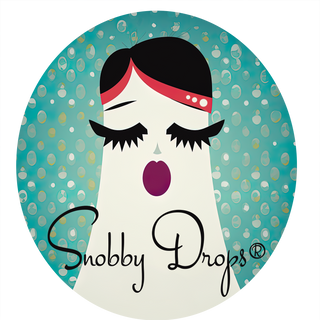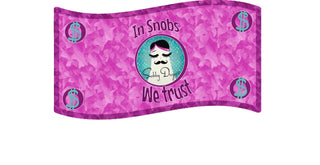Using light Effectively with Textured & Gradient backdrops">backdrops">backdrops
In the hands of a skilled photographer, backdrops can transform a simple portrait into an evocative masterpiece. While subject selection and camera techniques matter, few elements wield as much creative power as using light effectively with textured & gradient backdrops. Whether you’re a portrait photographer seeking to elevate your signature style or a studio owner searching for fresh photography ideas, understanding how light interacts with textured and gradient backgrounds will set your images—and your brand—apart.
Why Using Light Effectively with Backdrops Matters
Most photographers know that light shapes a subject. But the same light, when thoughtfully directed onto textured or gradient backdrops, does much more than illuminate; it sculpts mood, depth, and visual interest into every frame. Why is this skill worth mastering?
- Enhanced Storytelling: The interplay of lighting and backdrop design influences the story your portraits tell, adding emotion or drama.
- Portfolio Differentiation: Clients may not notice lens choices, but they’ll remember the atmosphere your backgrounds create.
- Studio Versatility: Knowing how to manipulate lighting opens a world of photography ideas for any photoshoot or client request.
With textured & gradient backdrops, a single canvas can unlock an infinite range of looks—if you know how to light it. Read on for inspiration, expert tips, and actionable advice you can use in your next studio session.
Key Ideas and Examples: Crafting Images with Light, Texture, and Gradient
Let’s explore how using light effectively with textured & gradient backdrops can elevate your portraits, infuse them with atmosphere, and delight your creative clients.
1. Sculpt Depth with Directional Lighting
Textured backdrops—featuring elements like brushstrokes, marbling, or fabric folds—catch light differently across their surface. To maximize their potential:
- Side Lighting: Use a softbox or umbrella off-camera to one side to bring out the highlights and shadows in the backdrop’s texture. This adds a three-dimensional quality behind your subject.
- Harder Light for Drama: Consider a focused, unmodulated light source like a bare bulb to increase texture contrast and drama, perfect for moody editorial looks.
Example: For a classic painterly portrait, use a canvas-textured backdrop and direct your key light from 30 to 45 degrees. The raking light across the backdrop’s surface will pop its subtle details, while a gentle fill keeps your subject luminous.
2. Amplify Mood with Gradient Backdrops and Color Gels
Gradient backdrops—those that transition from one color or shade to another—respond brilliantly to creative lighting.
- Match or Contrast: Add a colored gel to your background light to intensify or shift the gradient, customizing the ambiance for each session.
- Spotlighting Effects: Point a background light at the area of the backdrop you want to brighten or highlight, making the gradient more pronounced and dynamic.
Soft edge spotlights mimic sunrise/sunset lighting for a contemporary fine art look. Try warming up a gray-to-blue gradient backdrop with an amber gel for a sunrise-inspired pop.
3. Create Visual Flow with Vignettes and Feathering
Feathering your lights (aiming them just off the center of your backdrop) helps produce a soft roll-off, enhancing a gradient effect or gently downplaying texture for a classic vignette look.
- Vignette for Focus: Use flags or barn doors to narrow your light and create a natural frame around your subject, as seen in timeless studio portraiture.
- Highlight Key Texture: By feathering from below or above, select only a portion of a highly-textured backdrop to showcase, keeping the rest subtle for a refined studio backdrop inspiration.
4. Incorporate Rim Lighting for Subject Separation
When shooting on richly textured or deep gradient backgrounds, a subtle rim or hair light (positioned behind your subject) carves out the silhouette and stops your subject from blending into the backdrop. This technique is especially impactful for creative studio owners seeking a contemporary, high-contrast result.
Pro Tip: Use a stripbox along either edge of your backdrop to create a soft glow that defines both your subject and the backdrop’s texture or gradient transition.
5. Reference and Research: Drawing Inspiration
For even more studio backdrop inspiration:
- Study renowned portrait photographers on Pinterest and see how they use light and texture together.
- Review educational articles at reputable photography sites like Professional Photographers of America (PPA) for updated lighting trends.
How to Use Backdrops: Step-by-Step Setup for Effective Lighting
Ready to apply these techniques in your own studio? Here’s a practical guide to using light effectively with textured & gradient backdrops. This step-by-step process ensures you get the most out of both your backdrop and lighting setup:
Step 1: Select Your Backdrop
- Choose a backdrop that fits your session’s mood: textured for drama, gradient for contemporary or airy looks.
- Be mindful of size and placement. For help picking the right size, review our Backdrop Size Guide.
Step 2: Choose Your Lighting Tools
- Start with a key light—softbox, umbrella, or strobe—to illuminate your subject. Modifier choice will change shadow softness and how much light spills onto your backdrop.
- Identify background lighting—additional strobes, reflectors, or gels—to independently light your backdrop and enhance its features.
Step 3: Test Light Placement and Power
- Move your background light around to see how the texture or gradient responds. Side-lighting brings out texture, while direct backlighting enhances gradients.
- For textured backdrops, shoot a few test frames at different angles and modifier distances. Notice where the texture pops or fades and adjust accordingly.
- For gradient backdrops, use a spot, strip, or gridded light to control gradient intensity and shape.
Step 4: Adjust for Mood and Style
- Want bright and airy? Keep the backdrop evenly lit with large, diffused sources.
- Craving moody drama? Underexpose the background and use harder, more directional lighting.
- Experiment with colored gels for fresh, stylized photography ideas, or reference current Pinterest trends for inspiration.
Step 5: Fine-Tune and Experiment
- Bring in flags, reflectors, or whiteboards to sculpt light and reduce spill for cleaner separation between subject and backdrop.
- Explore “feathering” or bouncing light for subtler transitions, ideal for gradients or softer portraiture.
- Capture test shots and analyze: Are the texture and gradient working together, or does one overpower the other? Make small adjustments until the balance feels right.
Bonus: Camera Settings and Workflow Tips
- Use wide apertures (f/2.8–f/4) for subject isolation with softly rendered backdrop texture, or smaller apertures (f/8–f/11) to bring out intricate backdrop detail.
- Shoot tethered or review frequently on a calibrated external screen to ensure colors, gradients, and textures render as intended.
Snobby Drops Product Tie-In: Curated Backdrops for Creative Studios
At Snobby Drops, we believe using light effectively with textured & gradient backdrops should be both inspiring and accessible. Our curated collections are crafted for portrait photographers, studio owners, and creatives who demand exceptional quality, effortless versatility, and maximum impact from their studio setups.
- Signature Textured Backdrops: Each design is painted, printed, or crafted to respond beautifully to side and raking light, turning any shoot into an editorial experience.
- Dynamic Gradient Backdrops: Our gradients are designed to interact with both warm and cool lighting setups, so you can create subtle transitions or make bold, color-soaked statements.
- Premium Construction: Built to withstand frequent use, our backdrops stay true to color and texture, shoot after shoot—ideal for busy studios and creative experimentation alike.
Explore These Collections:
- Textured Backdrops: Painterly, rustic, and ultra-modern textures for portrait artists.
- Gradient Backdrops: From soft ombrés to bold, high-contrast transitions for trend-forward creators.
- Tutorials & How-To Collection: Step-by-s


